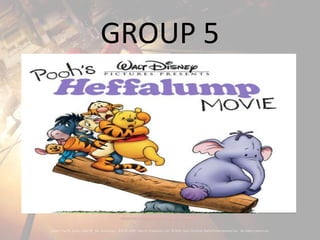
Making inferences
- 1. GROUP 5
- 7. Inferring—making inferences—is often described as making a logical guess gathering clues and reading between the lines reaching conclusions on the basis of evidence and reasoning “author and me” questions Synonyms, deduction, conjecture, speculation, presumption
- 9. Ask yourself questions as you read Think about what the author tells you Think about your own experiences Make an inference based on the information you thought about.
- 10. • How to making inferences support reading comprehension, If readers use no other resources than their own background knowledge to create meaning, their comprehension of a subject is limited. On the other hand, using only text disallows the validity of their personal point of view, no connection is made, and only literal comprehension may result. When readers infer, they are personally engaged with the text, are more aware of the author's purpose, and are processing to deeper meaning (Zweirs, 2005).
- 11. To help less skilled readers learn to make the same types of inferences, Beers suggests that teachers use short passages to show students how to do the following: Recognize the antecedents for pronouns Figure out the meaning of unknown words from context clues Figure out the grammatical function of an unknown word Understand intonation of characters' words Identify characters' beliefs, personalities, and motivations Understand characters' relationships to one another Provide details about the setting Provide explanations for events or ideas that are presented in the text Offer details for events or their own explanations of the events Understand the author's view of the world Recognize the author's biases Relate what is happening in the text to their own knowledge of the world Offer conclusions from facts presented in the text [From Beers, 2003, p. 65. Reprinted by permission.]
- 12. “I don’t get it”... Sometimes people say this when there’s a piece of information they don’t know that’s keeping them from making an inference. In this comic you have to know what a “symptom” is. A symptom is a sign or indicator of something. Calvin is trying to show his mom signs of being sick but tells her so many silly ones that she knows he’s faking it.
- 13. Think about the hidden information in this comic that you have to figure out in order to “get it”.... The teacher sends Calvin to the principal when he takes the gum out of his mouth and offers to share it instead of understanding that his teacher is sarcastically reminding Calvin that he shouldn’t be chewing gum. He tries to blame the teacher for the trouble he’s in with the principal.
- 14. • When you think about that hidden information on your own and understand the comic the author has written, you’re making an inference! • It’s like an “author and me” question where you use your own thinking and background knowledge combined with the information the author has written.
- 15. Now try some on your own to practice the skill of making inferences: • As you read the comics on the keynote try explaining why it’s funny. In order to explain, you’ll need to “read between the lines” and tell what information isn’t directly there. This is inferring. • Sometimes you may not “get it”. If that happens, you can write your note instead on what you don’t understand. That’s the missing information that’s keeping you from inferring.
- 16. 1 Making an inference means knowing what a “screen saver” is.
- 17. Making an inference means knowing why Jon would need his receipt.
- 18. Making an inference means knowing what “draw the line” means in this context.
- 19. Making an inference means knowing what the word delusional means.
- 20. Making an inference means figuring out whether Jon and Garfield are laughing or crying in the last frame.
- 21. Now every time you read a comic you can practice the skill of inference and think about reading between the lines. Make Garfield proud!
